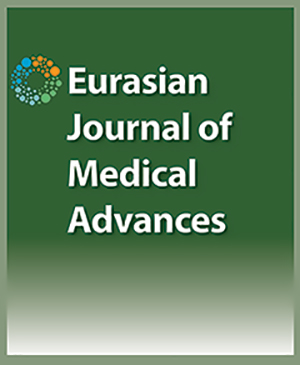

The Prevalence of Insulin Resistance in the Turkish Population: A Study Conducted with 3331 Participants
Ahmet Kaya1, Elif Turan2, Mehmet Uyar3, Fahri Bayram4, Yasar Turan21Department of Endocrinology, Necmettin Erbakan University, Konya, Turkey, 2Department of Endocrinology, Bozok University, Yozgat, Turkey, 3Department of Public Health, Necmettin Erbakan University, Konya, Turkey, 4Department of Endocrinology, Erciyes University, Kayseri, Turkey,
Objectives: The aim of this study was to apply the homeostasis model assessment of insulin resistance (HOMA-IR) and examine the relationships between age, sex, and body mass index (BMI) and the prevalence of diabetes mellitus (DM) and insulin resistance (IR) in the Turkish population of different regions of the country. Methods: This was a cross-sectional, observational study designed in the framework of a multicenter study to analyze the Turkish prevalence of insulin resistance. The study sample consisted of volunteers from the 7 different regions of Turkey. Weight, height, and waist circumference were measured. BMI, blood pressure, fasting blood glucose, and fasting blood insulin levels were calculated. IR was determined using the HOMA-IR. Results: The prevalence of DM, impaired fasting glucose, and IR was 11.1%, 21.3%, and 26.2%, respectively, in all 7 regions of Turkey. IR was detected in 28.9% of women and 25.1% of men. The difference between men and women was significant (p=0.04). The prevalence of IR in postmenopausal women (30.8%) was higher than premenopausal women (25.1%) (p<0.04). A comparison of age groups revealed that the prevalence of IR among those aged 50 to 59 (33.8%; p<0.001) was higher than in the other age groups. IR was also more prevalent in those with a BMI >25 kg/m2, those with hypertension, and those living in city centers (p<0.05). Conclusion: The high prevalence of IR and DM in Turkey is an important public health problem. This study provides a large-sample representative study of the Turkish population. The prevalence of IR was highly correlated with central obesity, hypertension, and a more sedentary lifestyle, such as is often seen in city centers. There is an urgent need to institute more aggressive, nationwide public health measures and screening programs regarding obesity.
Cite This Article
Kaya A, Turan E, Uyar M, Bayram F, Turan Y. The Prevalence of Insulin Resistance in the Turkish Population: A Study Conducted with 3331 Participants. EJMO. 2017; 1(4): 202-206
Corresponding Author: Elif Turan



